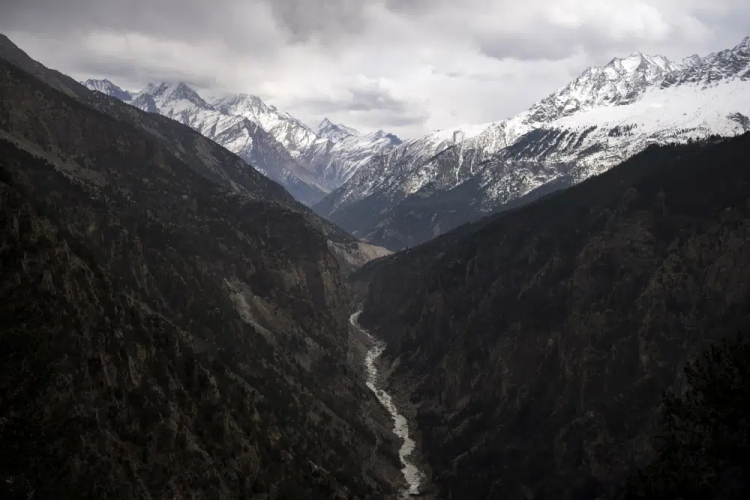BENGALURU, India (AP) — A recent report highlights the alarming rate at which glaciers are melting in the Hindu Kush Himalayan mountain ranges. If immediate action is not taken to reduce greenhouse gas emissions, these glaciers could lose up to 80% of their volume by the end of this century.
The report, released by the International Centre for Integrated Mountain Development based in Kathmandu, warns of the growing risks of flash floods and avalanches in the years to come. Furthermore, it emphasizes the significant impact on the availability of fresh water for nearly 2 billion people residing downstream of the 12 rivers originating from these mountains.
The Hindu Kush Himalayan ranges are a vital source of ice and snow, providing water to 240 million individuals living in the mountains and an additional 1.65 billion people downstream across 16 Asian countries.
Amina Maharjan, one of the authors of the report and a migration specialist, expressed deep concern for the communities inhabiting these mountains. Despite their minimal contribution to global warming, they face substantial risks due to climate change. The report underscores the inadequacy of current adaptation efforts and urges greater support to enable these communities to cope with the challenges ahead.
Earlier reports have consistently highlighted the vulnerability of the cryosphere, which includes areas covered by snow and ice, to the impacts of climate change. Mount Everest’s glaciers, for instance, have experienced a drastic loss of ice equivalent to 2,000 years’ worth in a mere 30 years, as revealed by recent research.
Amina Maharjan, emphasizing the significance of the findings, stated, “For the first time, we have mapped out the connections between changes in the cryosphere and their effects on water, ecosystems, and society in this mountainous region.” This research provides crucial insights into the interdependencies and consequences of cryosphere change for the surrounding ecosystems and human communities.
The report released on Tuesday highlights several key findings regarding the Himalayan glaciers and their implications. Firstly, it reveals that the rate of disappearance of these glaciers has accelerated by 65% since 2010 compared to the previous decade. This rapid decline is attributed to the effects of global warming.
One significant consequence of the reduced snow cover caused by global warming is the impending shortage of fresh water for those living downstream. The report underscores the importance of the Himalayan glaciers as a vital water source for the region and warns of the potential impacts on water availability.
The study also draws attention to the presence of 200 glacier lakes in the mountainous region that are considered dangerous. These lakes have the potential to trigger glacial lake outburst floods, a phenomenon that could see a significant increase by the end of the century.
These findings collectively highlight the urgency of addressing climate change and its impact on the Himalayan region, particularly in terms of water resources and the heightened risk of natural disasters such as glacial lake outburst floods.
The study emphasizes that communities in the mountainous regions, such as the Himalayas, are disproportionately affected by climate change compared to many other parts of the world. The report further states that the changes occurring in the glaciers, snow, and permafrost in the Hindu Kush Himalayan region, driven by global warming, are unprecedented and mostly irreversible.
The impacts of climate change are already being keenly felt by the communities residing in the Himalayan region. An example cited is the sinking of the Indian mountain town of Joshimath earlier this year, which necessitated the swift relocation of its residents.
Pam Pearson, the director of the International Cryosphere Climate Initiative, who was not involved in the report, explained the challenges associated with the melting ice. Once ice in these regions melts, it becomes exceedingly difficult to restore it to its frozen state. She compared it to a large ship in the ocean, stating that once the ice starts melting, it becomes incredibly challenging to halt the process. In the case of glaciers, particularly the significant glaciers in the Himalayas, the loss of mass will persist for a prolonged period before reaching a point of stability.
Pearson emphasized the critical importance of limiting global warming to the agreed-upon target of 1.5 degrees Celsius set during the 2015 Paris climate conference, particularly for Earth’s snow, permafrost, and ice. She expressed concerns that policymakers may not fully grasp the gravity of this goal, but irreversible changes are already underway in the cryosphere.
The remarks by Pearson highlight the urgency of taking immediate and substantial action to mitigate climate change, especially in relation to the vulnerable cryosphere and the communities that depend on it.








